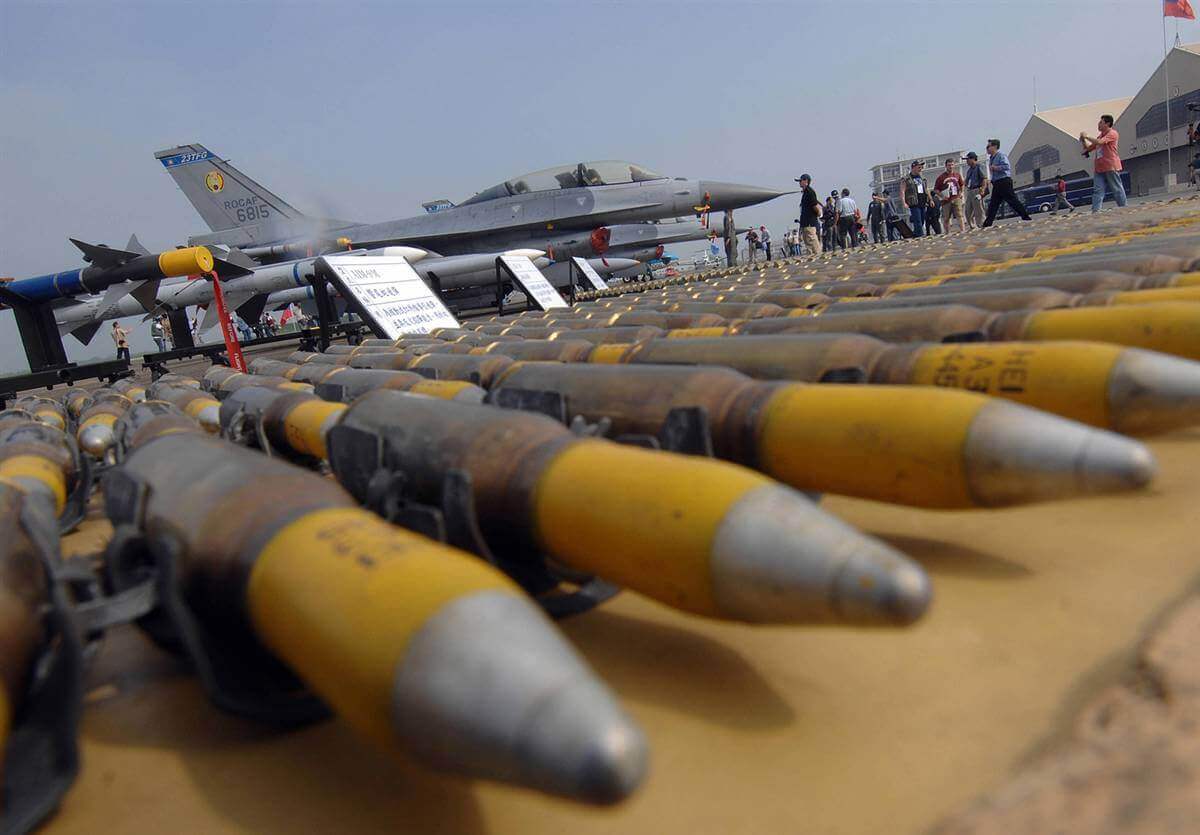

The Stockholm International Peace Research Institute’s (SIPRI) report on major arms transfers from 2016-2020 revealed virtually no change in the overall volume transfers from the 2011-2015 period. However, it did note significant increases in arms exports from the United States (US), France, and Germany and decreases from Russia and China. The SIPRI study also recorded a 25% increase in arms imports from countries across the Middle East, including Saudi Arabia (+61%), Egypt (+136%), and Qatar (361%).
After significant arms transfers in the 1981-1985 period, there was a continued downturn in the years that followed, until the 2001-2005 period, when there was yet another resurgence that saw increases in both the 2006-2010 and the 2011-2015 periods. The stagnation in the 2016-2020 period, however, reveals that this trend is slowing down once again, due in large part to decreases in Russian and Chinese arms transfers.

The US continues to be the world’s largest arms exporter, and its share of global arms exports rose from 32% in 2011-2015 to 37% in 2016-2020. It has exported arms to 96 countries during this five-year period, with 47% of these exports going to Middle Eastern countries and 24% of the US’ total arms exports being delivered to Saudi Arabia.
This five-year period also widened the gap between the US and Russia on this front. While the US reported a 15% increase in arms transfers, Russia reported a 22% decrease. After accounting for 20% of major arms transfers from 2016-2020, Russia now accounts for just 15.6%, with 90% of this drop traced to a 53% decrease in arms exports to India. This decrease in arms transfers to India significantly offset increases in transfers to China, Algeria, and Egypt. Alexandra Kuimova, a researcher with SIPRI’s Arms and Military Expenditure Programme, however, said that Russia has recently signed a spate of new deals with multiple countries that will greatly increase its figures in the years to come.


On the other hand, France and Germany, who are respectively the third and fourth latest arms exporters, made major gains between 2011-2015 and 2016-2020. France recorded a 44% increase during this period and now makes up 8.2% of the global arms export market, with 59% of its transfers going to India, Egypt, and Qatar. Germany, meanwhile, registered a 21% increase and now accounts for 5.5% of arms transfers worldwide. The majority of German arms exports were delivered to South Korea, Algeria, and Egypt.
Conversely, China, the world’s fifth largest arms exporter, much like Russia, registered a 7.8% drop in arms exports, although it continued to deliver a significant number of arms to Pakistan, Bangladesh, and Algeria.
Aside from exporters, SIPRI’s report also outlines a worrying and rapidly escalating arms race between Arab and Gulf states. Saudi Arabia leads a destructive coalition against Houthi rebels in Yemen, Egypt is at loggerheads with Turkey over hydrocarbon resources in the Eastern Mediterranean, and despite recent conflict resolution measures, Qatar continues to maintain tense relations with its neighbours.


Although Turkey’s arms imports decreased by 59%, this was largely attributed to the US’ cancellation of a deal for the delivery of F-35 combat aircraft in 2019 after Ankara imported Russian air defence systems. At the same time, Turkey is also increasing its domestic production of arms.
Simultaneously, Israeli arms exports also rose by 59%, which, combined with its indiscriminate annexation of Palestinian territory and enduring conflict with Iran, paints an alarming picture.
Similarly, in North Africa, Algeria has increased its arms imports by 64% amidst growing tensions with neighbouring Morocco.

While the Middle East reported the greatest increase in arms imports between 2011-2015 and 2016-2020, Asia and Oceania represent the “largest importing region”, accounting for 42% of major arms imports, with the majority of these transfers going to India, Australia, China, South Korea, and Pakistan. Japan, too, increased arms imports by 124%. Much of this increase has been attributed to growing concern about China’s aggression and territorial ambitions in the region at large. That being said the Asia and Oceania region as a whole did record an overall 8.3% drop in arms imports.
Although India’s arms imports decreased by 33% between 2011-2015 and 2016-2020, this is largely due to its measures to reduce its reliance on Russian imports. Several major arms deals are in the works and are set to propel India up the list in the near future.
Lastly, the report recorded a 13% decrease in arms imports from African states and 43% from countries in the Americas.


For more information and detail, you can take a look at SIPRI’s Arms Transfers Database.

